Fiberglass on the Rise in Multi-Storey Buildings
backMeeting the growing demand for better value in high-rise applications
“We default to fiberglass windows,” says John Stephenson, Principal at Form Architecture in Thunder Bay. “They offer dimensional stability, durability, improved thermal performance over aluminum, and attractive profiles. DUXTON has been good to work with in trying to meet our design objectives.” Between the expertise of Form Architecture and the contribution of high-performance windows, Form won the city’s Clean Green & Beautiful Award on a recent project!
The fenestration environment has evolved significantly within the last few years alone. Changes to the National Building Code are driving an increasing demand for ever lower overall window U-values. Simultaneously, a more challenging climate is raising expected performance standards as reflected in the North American Fenestration Standard (NAFS).
These performance standards are especially pertinent for high-rise buildings which are exposed to higher wind loads and heavy use. Older buildings often have outdated windows that are sub-standard to current glazing technology. Building occupants notice that the windows are uncomfortably drafty and sometimes even inoperable. As a result, building owners are more closely evaluating options with engineers, architects and industry experts to determine suitable products that will offer longevity and energy efficiency.
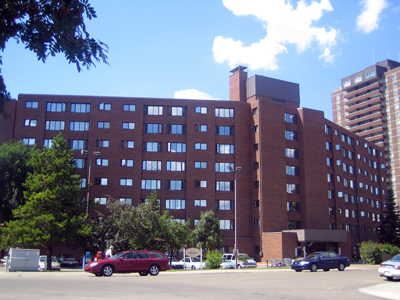
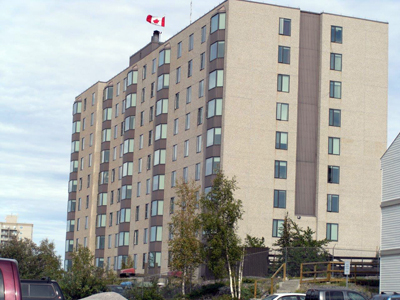
“The most dramatic difference we noticed over PVC was the stability fiberglass could offer in our extreme winter conditions,”
“The most dramatic difference we noticed over PVC was the stability fiberglass could offer in our extreme winter conditions,” comments Ray Decorby of Polar Developments Ltd. The package included over 100 bay windows, and casement windows for ventilation. Replacing the slider windows with offset casements created a better viewing area.In a 28-storey retrofit in Saskatoon, Hallmark Place condo owners noticed a difference in noise reduction. “We measured the sound transmission and noticed an average decrease from 55 decibels down to 25 – we cut the noise down by half,” comments Dave Pura of Pura Windows. The combination of DUXTON’s fiberglass frames with triple pane glass created a more comfortable, warmer, and quieter environment.“It’s important to work closely with the owners and key stakeholders,” comments Al Dueck, President of DUXTON. “You gain a deeper understanding of the end goals and appreciate the unique needs of each project.”In the case of Pleasantview Place, a GEF Seniors Housing retrofit, DUXTON supplied an Espresso coloured exterior frame to complement the existing brick, with a White interior to brighten the individual units.
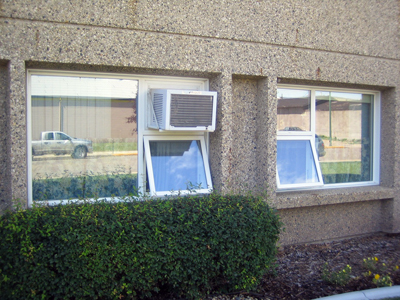
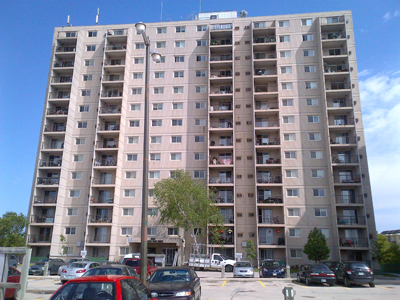
To enable tenants to open windows more easily, casements have an elongated crank handle. There are quite a few warmer days where the windows are wide open, and the tenants are enjoying their access to fresh air. In other projects, DUXTON has offered custom removable A/C trays with optional custodial locks.
WRE Development owns a number of mid- to high-rise buildings, and has used fiberglass windows in a wide range of applications. After having used vinyl windows in a high-rise building, WRE experienced some performance problems due to wind loads. “The flex in the vinyl frames created issues with air and water leakage,” says Rob Dyck. “We have used fiberglass windows and doors in numerous buildings since, and are very happy with the results.”
In fact, WRE not only used hundreds of sliding doors in multi-storey apartments, but also used DUXTON fenestration in their 3rd storey office addition, allowing a direct comparison with their aluminum windows on the 1st and 2nd floors.
“The new windows are not only much warmer in the winter but also created a much more comfortable environment in the summer,” says Dyck. “It was the combination of the superior thermal performance of the frame combined with a better selection of glazing that gives us excellent results.”
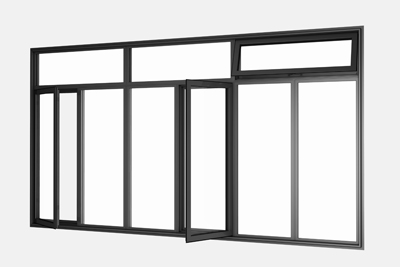
New Products for High-Rise Applications
Advances in pultruded fiberglass technology offer an exceptional array of products designed for such light commercial applications. DUXTON’s exclusive FiberWall™ system offers a robust range of fixed and outward opening systems. The series starts at 3 ¼” deep, but continues to 4 5/8” and 6 5/8” for larger, and higher performance requirements. DUXTON most recently launched the complementary FiberWall™ 458 Operator (Casements and Awnings) which offers greater structural capabilities, superior weather-tightness, and customized Insulating Glass options.
